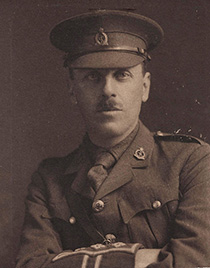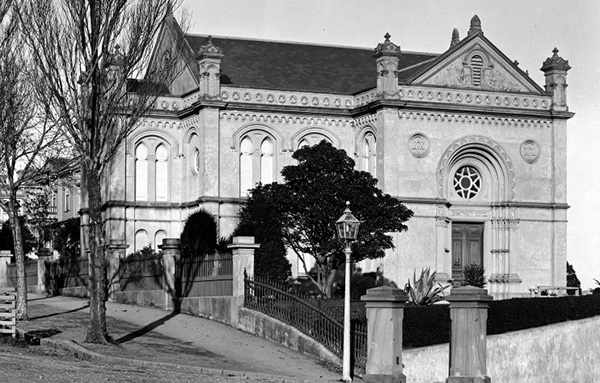‘Captain Goldstein was particularly well spoken of by the officers and men of his battalion. His position as regimental medical officer is about as dangerous a position as any man can fill … they are right in the thick of it, and… have all the hardships of a soldier in the front line.’
Lieutenant Colonel James Hardie Neil. New Zealand Herald, 20 December 1916, p.10.
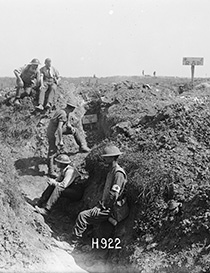
New Zealand regimental aid post in a captured trench at Puisieux, France, August 1918. Royal New Zealand Returned and Services' Association: New Zealand official negatives, World War 1914-1918. Ref: 1/2-013497-G. Alexander Turnbull Library, Wellington, New Zealand.
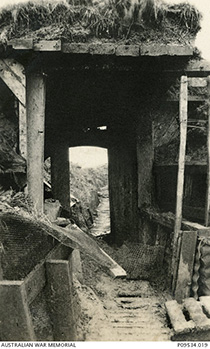
Post-war photograph of the entrance to the Ultimo Avenue communication trench near where Goldstein’s RAP was located during the initial attack on La Basse Ville in July 1917. Australian War Memorial. P09534.019.
Regimental Medical Officer
Goldstein enlisted for military service with the New Zealand Medical Corps in July 1915, aged 37. In September, he was assigned to the Red Cross train caring for wounded returning from the Gallipoli campaign as they made their way between Wellington, where they had landed, and their home towns further north. In October, Captain Goldstein embarked on the HMT Tahiti, arriving in Egypt in November 1915. After further military training, Goldstein left Egypt for the Western Front in April 1916 with the 2nd New Zealand Field Ambulance. Goldstein served with the 2nd New Zealand Field Ambulance until early 1918, but for the majority of this period was attached to the 2nd Battalion Wellington Infantry Regiment (WIR) as their Regimental Medical Officer (RMO).
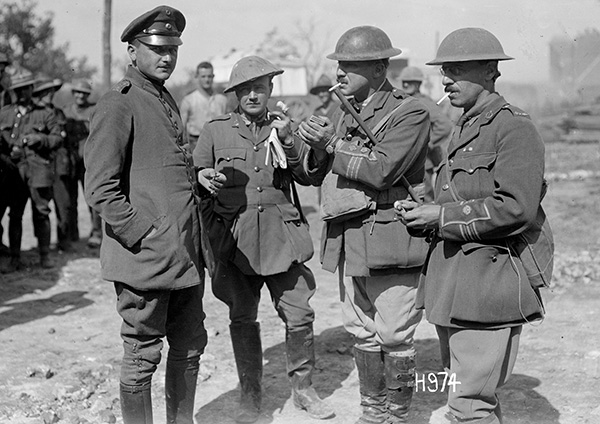 Right-left: Major Goldstein, Colonel James Hardie Neil (NZMC), unidentified, Lieutenant Schnelling, medical officer, 14th Bavarian Regiment, Bapaume, France, 27 August 1917. Royal New Zealand Returned and Services' Association: New Zealand official negatives,World War 1914-1918. Ref: 1/2-013543-G. Alexander Turnbull Library, Wellington, New Zealand.
Right-left: Major Goldstein, Colonel James Hardie Neil (NZMC), unidentified, Lieutenant Schnelling, medical officer, 14th Bavarian Regiment, Bapaume, France, 27 August 1917. Royal New Zealand Returned and Services' Association: New Zealand official negatives,World War 1914-1918. Ref: 1/2-013543-G. Alexander Turnbull Library, Wellington, New Zealand.
As RMO, Goldstein was responsible for the everyday health of the men of the 2nd Battalion WIR, treating minor injuries and ailments and managing hygiene and sanitation, including the unit’s water supply. When the unit went into battle, he was in charge of the Regimental Aid Post (RAP), ideally located just behind the frontline. Here, Goldstein and his assistants would assess and patch up the wounded and either return them to the frontline or evacuate them to an Advanced Dressing Station (ADS) for further treatment. If morphine was administered, or a tourniquet applied at the RAP, standard procedure was to mark the wounded soldier’s forehead with an `M’ or `T’. Other details were written on a tag similar to a luggage label and securely attached to the soldier’s uniform. In an account of fighting at Messines in June 1917, Goldstein describes how he ‘fixed the aid post under the side of a road over which the shells hurtled’ and after an hour or two of digging, created ‘a nice hole in which to put the wounded if they had to wait for bearers’.
Goldstein was awarded a Military Cross in August 1917 for his actions during fierce fighting at La Basse Ville, near Warneton, Belgium at the beginning of the Third Battle of Ypres. The 2nd Battalion WIR captured the small hamlet of La Basse Ville early on the morning of 27 July 1917 but later in the day the unit was overwhelmed by a company of the 16th Bavarian Division. During a successful counter-attack on the morning of 31 July, Goldstein established an improvised dressing station more than a mile in front of his Regimental Aid Post. Despite heavy enemy shelling, Goldstein remained at the dressing station attending the wounded. As a result, all casualties were evacuated before his unit was relieved in the evening by the 1st Battalion WIR.
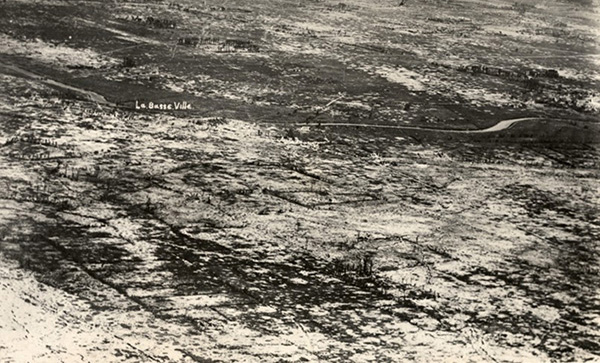 Heavily shelled landscape near La Basse Ville, Belgium 1917 [detail]. Accession no. 1992.760. National Army Museum of New Zealand.
Heavily shelled landscape near La Basse Ville, Belgium 1917 [detail]. Accession no. 1992.760. National Army Museum of New Zealand.
In February 1918, Goldstein became seriously ill with quinsy, a rare complication of tonsillitis. He was hospitalised and evacuated to England where he spent further time in hospital and a month convalescing in Brighton. Returning to duty in April, Goldstein was attached to the 2nd New Zealand General Hospital at Walton on Thames. In August, he returned to France where he was given command of a section of the 3rd New Zealand Field Ambulance and promoted to the rank of Major.



